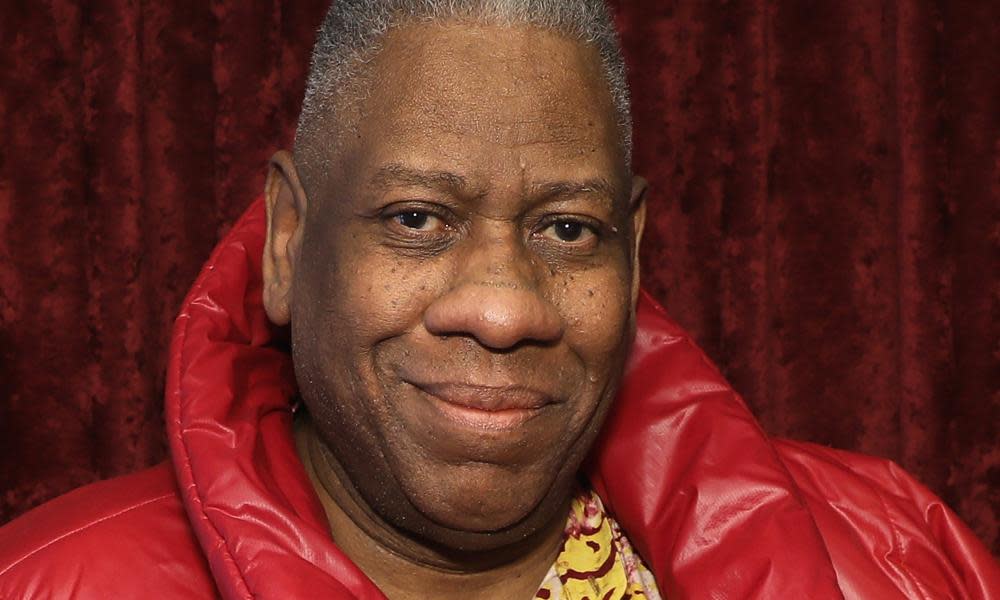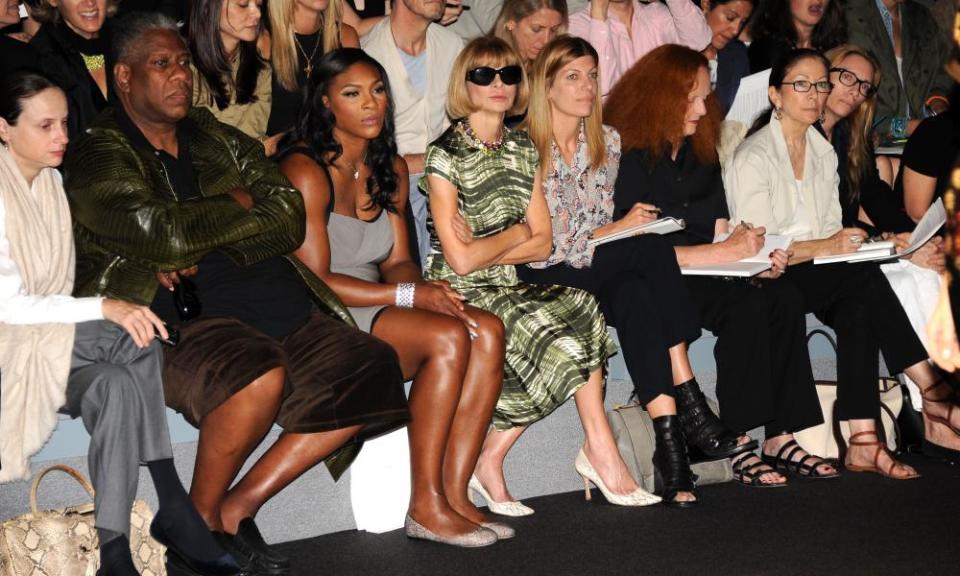André Leon Talley was a heroic outsider – and embodied the fashion industry at its best

The late creative director of Vogue used his work to transcend racism, and transformed the way we dress along the way
When I started working in fashion in 2016, one thing was clear: this was a white, female and thin industry. André Leon Talley, who died on Tuesday, at 73, was defiantly, unapologetically and fabulously none of these things.
Talley’s passing isn’t just the tragic end to the life of a figure who revolutionised perspectives towards clothes. It’s also the silencing of a voice who represented what fashion could be: the triumph of the outsider in a world of cookie-cutter conformity. People of colour, like myself, are constantly being told to make ourselves smaller and to hide our true selves if we are to survive unscathed in an overwhelmingly white world. Talley was heroic because he never followed these rules. He never apologised for his booming voice, which pronounced in sing-songy staccato sentences, his unconventional body shape or his blackness, despite knowing that racism is “part of the fabric of our existence”, as he wrote in his memoir, The Chiffon Trenches.
Like many creative aesthetes, Talley survived the cruelties of his childhood (including sexual abuse) by escaping into a world of culture. He grew up in North Carolina, living with his grandmother, as was the norm for many in those days in the black community (he called her “Mama”). He craved to live in the world painted for him by Diana Ross, Nina Simone and Laura Nyro. While he yearned for the elegant luxuries depicted in a book about the Titanic, which he found at his aunt’s house, copies of Vogue provided him with an aspirational safe space, where, he said, “bad things never happened”. At Brown University, Talley’s mind was expanded by Rimbaud and Baudelaire, while he found a new aesthetic freedom to express himself through his style.

Inspired by Naomi Sims, the first black model he saw in Vogue, Talley took to wearing makeup from the Japanese kabuki theatrical tradition, and a floor-length admiral’s coat. When he returned home to North Carolina for a holiday, Talley’s mother refused to attend church with him and scorned, or “shaded”, his “Phantom of the Opera look”. Ouch. But, no matter – the bird was out of its cage, and he moved to New York and found work as an unpaid assistant to Diana Vreeland at the Metropolitan Museum of Art. Through Vreeland’s patronage, Talley found reception work at Andy Warhol’s Interview magazine, before becoming the publication’s resident fashion expert. Deep friendships with Karl Lagerfeld and Halston intertwined with jobs at WWD, W, Ebony and, later, Vogue, where he became creative director under Anna Wintour, having started as a fashion news director in 1983. It was a momentous first for fashion: “As an African American born in the ugly and racist Jim Crow south, I understood how monumental this was,” Talley wrote. “I was the first.”
Related: André Leon Talley: 'My story is a fairytale, and in every fairytale there is evil and darkness'
His presence and perspective at Vogue prefigured today’s reality, in which there are more people of colour in fashion editorial, and inclusivity has become a growing norm on the catwalk (if not in fashion magazines), while, at the very least, conversations about diversity are not laughed out of the boardroom. But for many of the years between 1983 and 2018, when Beyoncé appeared on the cover of Vogue’s September issue, shot by Tyler Mitchell, the first black photographer to shoot a cover in the magazine’s 130-year history, Talley was the only person of colour on the front row at fashion shows. As he wrote in The Chiffon Diaries: “none of my contemporaries have seen the world through black eyes”. Through fashion writing, Talley transcended this racism. “My blackness was not important,” he said, reflecting on writing up a particularly electrifying Yves Saint Laurent show report. “What mattered was that I was smart.”
Talley was always a larger than life figure, whose theatrical presence thrummed with a joie de vivre: he would sashay in the face of the glacial, mannered world in which he worked, and described the racism and homophobia he experienced in fashion as “subtle” and “casual” (he was nicknamed “Queen Kong” in Paris fashion circles). And yes, Talley never compromised on what he felt was important: a fierce advocacy for the vision of the fashion designer. His death is the extinguishing of a unique, inspirational light.
Priya Elan is the Guardian’s deputy fashion editor

 Yahoo Movies
Yahoo Movies 
